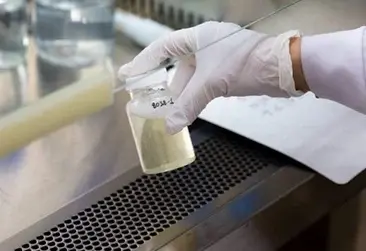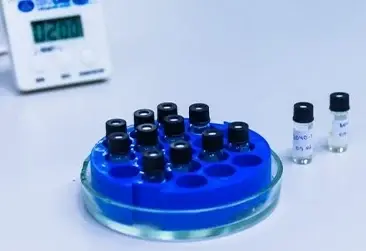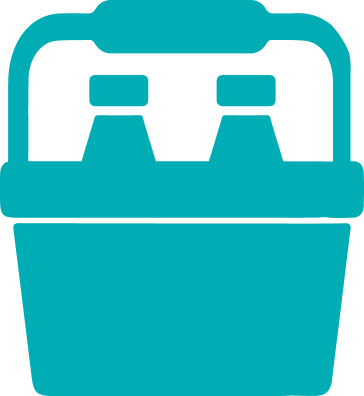Industrial Discharge Testing Services
Industrial facilities face a complex web of environmental regulations, stakeholder expectations, and internal quality standards. Managing your effluent isn’t just about meeting numeric limits—it’s about ensuring long-term operational efficiency, mitigating liabilities, and demonstrating environmental stewardship.
"*" indicates required fields
Why Test Industrial Discharges?
Industrial discharges vary widely depending on the raw materials, production processes, and end products involved. Without robust testing, facilities risk environmental harm, operational inefficiencies, reputational damage, and costly penalties for non-compliance. Effective testing allows you to:
Maintain Permit Compliance
Ensure adherence to local, state, and federal environmental regulations such as the NPDES (National Pollutant Discharge Elimination System) in the U.S. or similar regional frameworks worldwide.
Protect Infrastructure and Equipment
Detect corrosive or scale-forming chemicals before they damage pipes, pumps, or downstream treatment units.
Optimize Treatment Strategies
Identify which constituents require targeted removal, helping you refine chemical usage, reduce energy costs, and manage sludge disposal more efficiently.
Demonstrate Corporate Responsibility
Show stakeholders, investors, and the public that you’re committed to responsible environmental practices.
Real-World Industry Examples
Petrochemical & Refining Facilities
Contaminants:
Hydrocarbons, benzene, toluene, ethylbenzene, and xylene (BTEX), phenols, and heavy metals.
Why Test:
Refineries operate under stringent effluent limitations to prevent toxic hydrocarbons and metals from entering waterways. Accurate
Read More
Read More
Read Less..
Food & Beverage Processing Plants
Contaminants:
High biochemical oxygen demand (BOD), chemical oxygen demand (COD), fats, oils, greases (FOG), nutrients (nitrogen, phosphorus).
Why Test:
Discharging untreated organic-rich wastewater can deplete oxygen in receiving waters, harming fish and other aquatic life.
Read More
Read More
Monitoring BOD/COD and nutrients ensures compliance with municipal pretreatment standards and can reveal opportunities to enhance resource recovery and reduce treatment costs.
Read Less..
Pulp & Paper
Mills
Contaminants:
Suspended solids, color, chlorinated organic compounds (AOX), and wood-derived organics.
Why Test:
Regulatory agencies often limit the release of chlorinated compounds due to their persistence and toxicity. Testing helps mills maintain
Read More
Read More
Read Less..
Metal Finishing & Electroplating Operations
Contaminants:
Heavy metals (chromium, nickel, zinc), cyanides, acidic/alkaline discharges.
Why Test:
Strict local and federal mandates control metals and cyanides due to their toxicity and environmental persistence. Routine testing
Read More
Read More
Read Less..
Pharmaceutical & Biotech Manufacturers
Contaminants:
Active pharmaceutical ingredients (APIs), solvents, antimicrobial compounds, endocrine-disrupting chemicals.
Why Test:
Regulatory interest in emerging contaminants is growing. Testing ensures that APIs and other biologically active
Read More
Read More
substances don’t escape into receiving waters, where they could affect aquatic life or human health. Data-driven insights can guide investment in advanced treatment technologies like activated carbon or membrane filtration.
Read Less..
Textile & Dyeing Facilities
Contaminants:
Synthetic dyes, surfactants, metals, and salts.
Why Test:
Color-intensive and high-salinity effluents can harm aquatic ecosystems. Meeting discharge standards requires continuous monitoring and
Read More
Read More
Read Less..
Automotive & Aerospace Manufacturers
Contaminants:
Oil, grease, solvents, coolants, heavy metals.
Why Test:
Preventing oils and solvents from entering surface waters is critical for maintaining aquatic habitat quality. Regular testing supports
Read More
Read More
Read Less..
Analytical Techniques & Tools

Sophisticated Instrumentation
We leverage ICP-MS for trace metal detection, GC-MS/MS and LC-MS/MS for complex organics, and spectroscopic methods for turbidity, color, and nutrient analysis.

Real-Time Monitoring
For processes needing immediate feedback—like fine-tuning pH, adding coagulants, or controlling nutrient dosing—we assist in deploying continuous monitoring systems
Read More
Read More
Read Less..

Forensic Approaches
When puzzling exceedances occur, our forensic-level investigations pinpoint culprit compounds and upstream process sources. This strategic detail guides targeted mitigation efforts.
Interpreting the Data & Driving Improvements

Compliance Roadmaps
We translate raw data into actionable insights, helping you maintain compliance now and anticipate future regulatory shifts.

Operational Optimization
Through data trend analysis, we identify patterns—such as recurring exceedances after maintenance periods—and recommend process adjustments or treatment upgrades.

Resource Efficiency
Understanding which contaminants are most troublesome allows you to invest in the right technologies, reduce unnecessary chemical usage, and minimize sludge handling costs.
Preparing for Tomorrow’s Regulations
As industrial discharge standards evolve—whether through stricter nutrient limits, tighter metal restrictions, or the addition of emerging contaminants like PFAS—partnering with PITS Environmental ensures that you’re always one step ahead. Our experts track regulatory changes, adopt new analytical methods, and provide strategic recommendations that safeguard your compliance, infrastructure, and reputation well into the future.
Expert Insights on Testing Methods

ICP-MS (Inductively Coupled Plasma Mass Spectrometry) for detecting trace metals with precision.

Microbiological Testing for identifying pathogens like E. coli and Legionella.

Ion Chromatography for measuring ions like nitrates and sulfates.
Reliable Water and Air Quality Testing Services
Protect your environment with our specialized water and air quality testing solutions, offering comprehensive analysis to detect contaminants, convenient sample collection, and on-site testing for immediate results. Contact us today to schedule a consultation or on-site visit and take the first step toward a healthier, safer environment!
Frequently Asked Questions
How frequently should industries test their discharge?
Testing schedules vary based on permit requirements and operational complexity. High-risk sectors may test daily or continuously, while others do so monthly or quarterly. We can help design a frequency that ensures data quality, regulatory compliance, and operational efficiency.
What if our discharge doesn’t meet permit limits?
We provide more than results. If you identify a compliance gap, we’ll work with you to interpret the data, recommend process improvements, and select advanced treatments (e.g., granular activated carbon, membrane bioreactors) to address specific pollutant challenges.
Do you assist with reporting and record-keeping?
Yes. We generate user-friendly, regulator-ready reports and can integrate data into your environmental management systems. We also help ensure documentation aligns with permits, audits, and stakeholder communications.
Can you accommodate emerging contaminants of concern?
Absolutely. Our lab stays current on emerging pollutants—such as endocrine disruptors or PFAS—and is equipped with cutting-edge methods to detect, quantify, and guide strategies for managing them.
How does industrial discharge testing help with sustainability goals?
By identifying inefficiencies, recovering valuable materials, and reducing pollutant loadings, testing supports sustainable manufacturing practices. Lower environmental footprints, improved community relations, and alignment with ESG (Environmental, Social, and Governance) benchmarks are all possible outcomes.
Request a Test or Consultation
Your Environment, Our Priority – Fill out the form below, and our team will get back to you as soon as possible.
"*" indicates required fields





